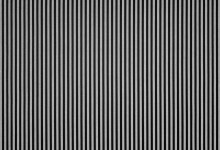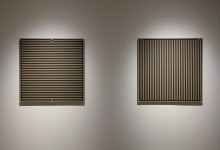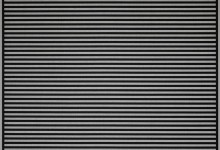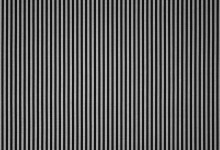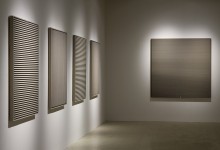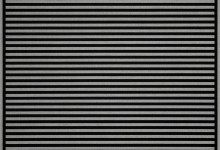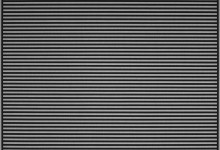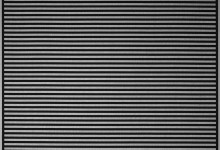Opening reception: Saturday, January 17 from 3-5pm
Neil Harrison: Fields
Text by Natasha Chaykowski
I have been thinking about how the simplest of forms can evoke unexpectedly complex feelings and conjure precise meanings. Kazimir Malevich’s stark black square, hung unconventionally in the upper corner of a room like an icon; Mark Rothko’s ethereal, murky monochrome rectangular shapes; and in cultural tropes, the ubiquitous red square of protest (and hope) and the archaic inverted triangle of femininity all speak to this.
There is something seductive about these kinds of unornamented forms, as though in their unassuming simplicity, they bypass the complex barriers of cognition that we rely on to interpret the world and filter through its cacophonous stimuli. Instead, these forms may heuristically access some spark of recognition or feeling via a more direct route to the mind. This is the case with Neil Harrison’s monochromatic paintings of clean geometric figures.
Harrison’s canvases however—unlike the red square or inverted triangle, which are tethered to specific forms of meaning—are unmoored from particular referents. In their basic composition they masquerade under the aesthetic of well-known symbols, but are instead productions of an artistic imagination: a language playfully void of any context outside the borders of the canvas. They elicit a spark of recognition that is swiftly thwarted in its emptiness as the symbols refer to nothing but themselves. In this way, Harrison draws attention to the currency of symbols in the economy of our visual world, suggesting that we should perhaps be more cognizant of the instinctive connections often made between form and meaning.
While symbols are frequently featured in Harrison’s work, his most recent series, Fields, deals more in the language of motif. The clean, precise black lines of these new works evoke the regularity of manufactured objects: fences, racks and grates. The formulaic patterns and imposing bars seem at first an entrapment, but in each of the works there is escape; among the calculated, cage-like rhythms of the paintings, there is always an element of irregularity that breaks the otherwise seamless continuity of Harrison’s pattern. In this play between steady cadence and jarring disruption, the artist challenges the viewer to approach his design-like works not as aesthetic objects, but rather as puzzles that simultaneously pose a problem and furnish its solution.
Referencing Black Square, Harrison’s series depart from Malevich’s proclamation of painting as “pure feeling” to propose instead something along the lines of painting as “pure cognition” in their diagrammatic compositions. He relocates computational grids and modernist design from the surfaces of electronic screens and magazine pages, to the clean white walls of the gallery in an effort to re-contextualize the processes of looking at simple forms. The cognitive play that Harrison’s paintings invite is a welcome pause from the barrage of visual matter in our image-saturated world.



